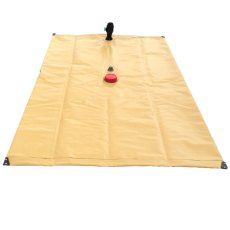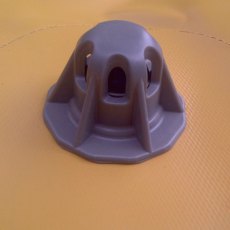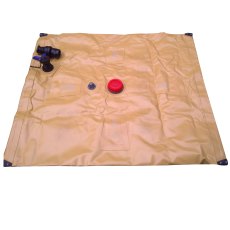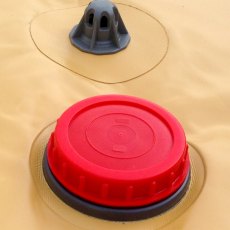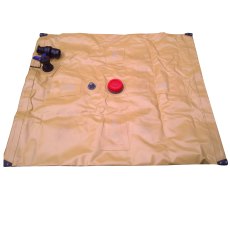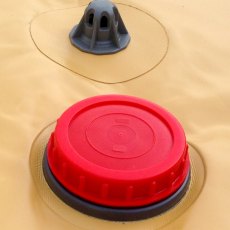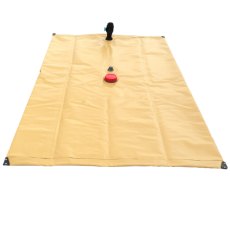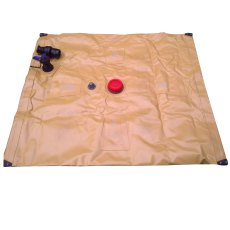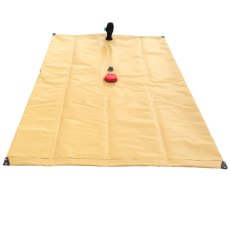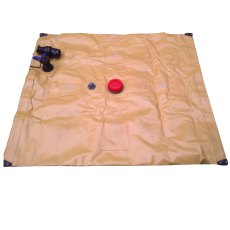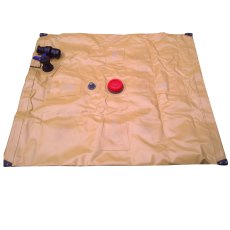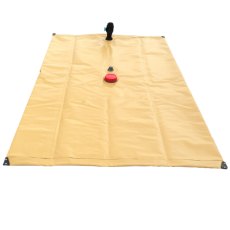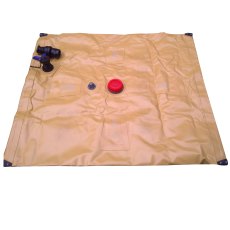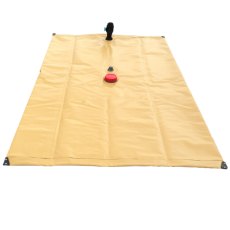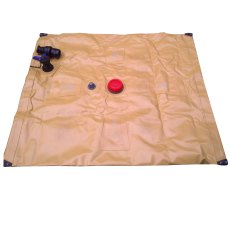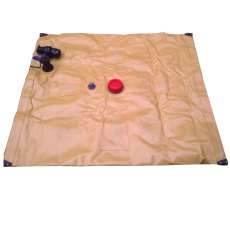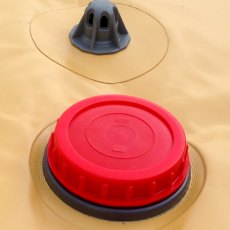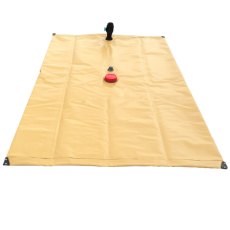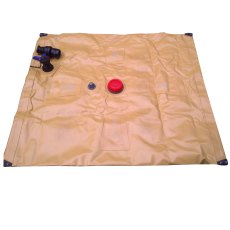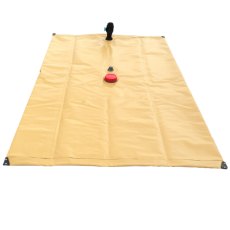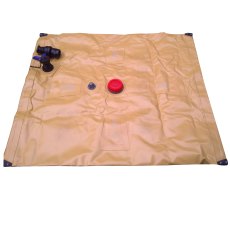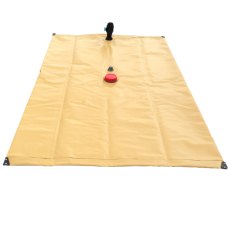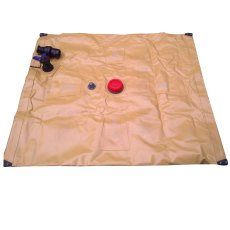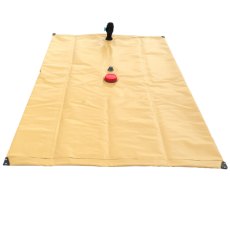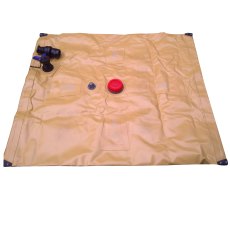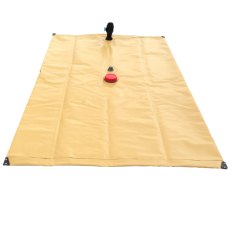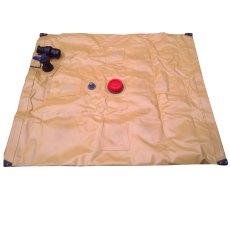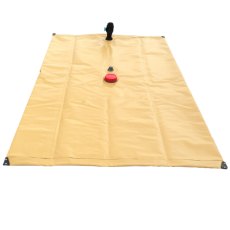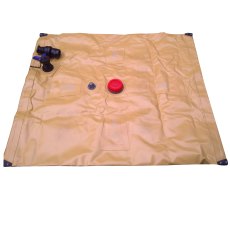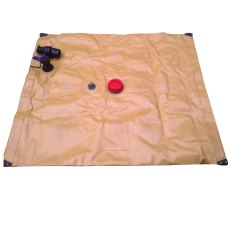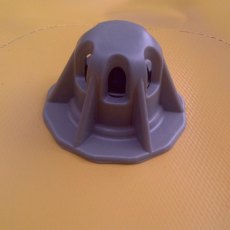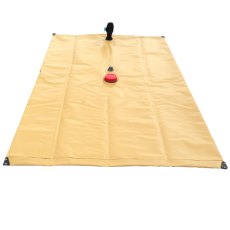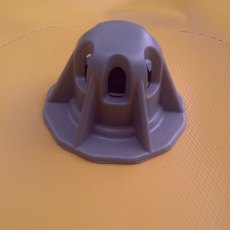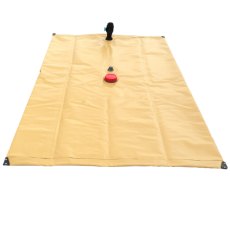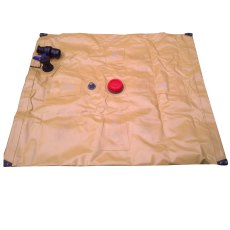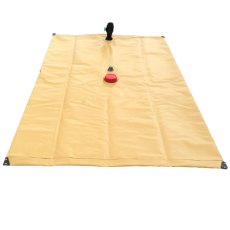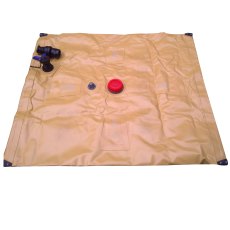Potable Bladder tanks FAQs
What ground preparation is needed for a Bladder Tank?
A flat well-drained location is the ideal choice of a site that should be free from rocks, stones, tree stumps or any other sharp objects that may chafe or puncture the tank. On rough or stony ground sharp objects should be removed and ideally a layer of sand laid to provide a base. Maximum care must be taken to avoid placing tanks on ground having a cross slope as the tank is liable to “roll away” when being filled.
Do I need a ground sheet?
Not always, if the ground is free from debris and sharps then you can use these tanks without a ground sheet however, we do recommend using a ground sheet to prolong the life of the bladder tank
How do I fill the bladder tank?
This can be done from the water mains or through a pump with the relevant connector fitted to attach to the bladder tank. This must start slowly (up to max 490 litres per minute) then increased to a maximum of 1,000 litres per minute dependent on tank capacity
How do I empty the bladder tank?
This can be done by gravity or pumped, the tank may have to be lifted slightly to empty any remaining liquid
What is the best way to maintain my bladder water tank?
Our bladder tanks are quite easy to maintain. The surface should kept be clean of debris and washed down occasionally. The inside can be cleaned through a small hatch using a hose pipe then drained away
Can the bladder tanks be repaired?
Small cuts and abrasions can be repaired using our repair kit. Larger cuts/splits may have to be repaired at our factory (for a fee)
What liquids cannot be stored in a bladder tank?
PVC bladder tanks can store most liquids except fuels and certain acids, this requires a special material so please inquire. We can manufacture a bladder tank to store pretty much any liquid but please check with us regarding your specific application
How long do bladder tanks last?
A well-maintained bladder tank can last anywhere from five to ten years or more. The flexible bladder, often made from materials like PVC, polyurethane, or rubber, is resilient and designed to withstand repeated expansions and contractions without compromising its integrity. Regular inspections for signs of wear, tear, or damage, such as punctures or leaks, is crucial for identifying issues early on. Following proper cleaning procedures between uses helps prevent the accumulation of debris or contaminants that could affect the bladder's material over time.
Exposure to extreme temperatures, harsh chemicals, or prolonged sunlight can accelerate the deterioration of the materials. Proper storage, away from direct sunlight and in a controlled environment, contributes to preserving the tank's overall quality. Similarly, adhering to recommended usage guidelines and avoiding overfilling the tank helps prevent unnecessary stress on the bladder and extends its operational life. Tanks with reinforced seams, reinforced corners, and durable outer shells are more likely to withstand the demands of frequent use and challenging environments. When considering bladder tanks for your specific application, be sure to consult with manufacturers or suppliers to understand the expected lifespan based on your usage requirements and to receive guidance on proper maintenance practices.
What is the purpose of a bladder tank?
Bladder tanks are designed to provide a flexible and collapsible solution for storing and transporting water in a space-efficient and convenient manner. Bladder tanks are particularly valuable in situations where rapid deployment and mobility are crucial. The flexible bladder within the tank allows it to expand or contract based on the volume of water stored inside, ensuring efficient use of space. This makes bladder tanks ideal for emergency response scenarios, remote construction sites, agriculture, and firefighting efforts, where a quick and temporary liquid storage solution is necessary.
The sealed, flexible bladder serves as a barrier between the stored water and external elements, reducing the risk of contaminants entering the liquid. This makes bladder tanks suitable for applications where maintaining the purity and integrity of the water is essential, such as in drinking water storage. Their lightweight construction allows for convenient mobility, making them an excellent choice for temporary liquid storage needs in diverse environments. Whether it's establishing a temporary water supply for emergency response or transporting water to remote locations, bladder tanks provide a quick and efficient solution that can be easily moved and set up as needed.
What is the best material for a boat tank?
HDPE, a common choice for water storage, boasts impressive resistance to corrosion and UV radiation, making it well-suited for marine environments. Its innate durability ensures that the water bladder can withstand the rigours of boat use, remaining resilient against external elements that could compromise the integrity of the tank. XLPE, a variation of polyethylene, further enhances the performance of water bladder tanks on boats. Its cross-linked structure not only provides superior resistance to temperature extremes but also contributes to increased structural stability. This is particularly advantageous for boats where water tanks may be exposed to varying temperatures during journeys. The added resilience of XLPE ensures a prolonged lifespan for the water bladder, making it a reliable choice for boaters seeking a durable and robust water storage solution.
The lightweight nature of both HDPE and XLPE is a crucial factor for water bladder tanks on boats. Boats have specific weight limitations, and using lightweight materials helps maintain optimal weight distribution. The flexibility of these materials allows the water bladder to adapt to irregular spaces on the boat, optimising storage capacity without sacrificing structural integrity. Boaters can benefit from efficient space utilisation, ensuring they have an adequate and accessible water supply without compromising the vessel's performance.

 Login
Login